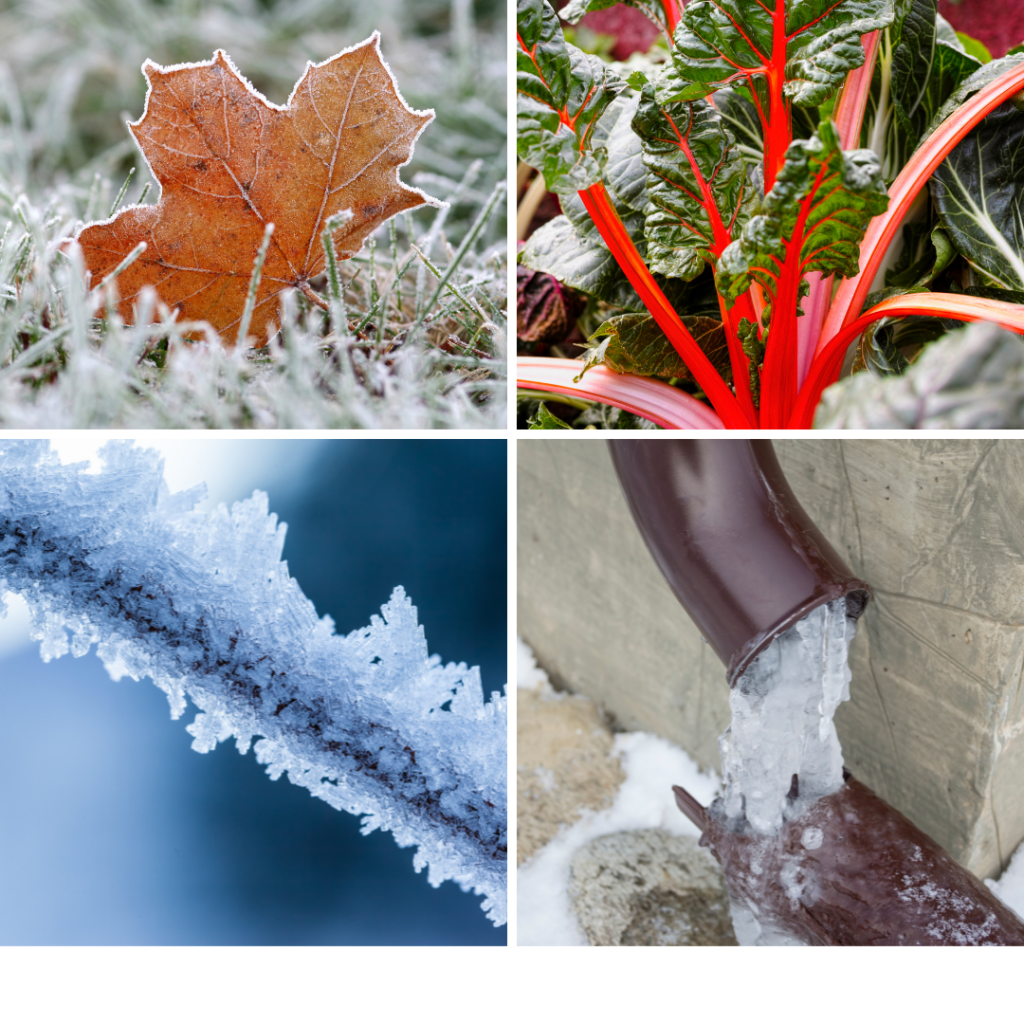Frost, freeze, frozen … what does it all mean for your plants?

Ah … finally, the big sleep—a hard frost. Every year when a “killing” frost is predicted, I take some mindful minutes to “walk my property” the night before and stop to reflect at all the different annuals, thanking them for their spectacular beauty, and long-lasting pollen … and alas, their short life-cycle.
But what does a “hard frost or freeze” actually mean? And as gardeners, can we stave off Mother Nature’s death knoll a little longer? Well, yes, yes, we can … sometimes, for some things. Boy, does that sound like a political answer.
Even though you might think frost and freeze terms are often used interchangeably, when it comes to plants (and meteorology), but they are really different phenomenon that have different effects on plants.
Let’s start with the lightest, least-damaging: frost. Frost is the appearance of visible ice crystals on the surface of plants (note, surface) that is critical part — on, not in the plant. For frost to occur on plants, the surface temperature must reach the low of 32 degrees — the freezing point of water. Does a frost affect plants? Yes, some, but not all.
There are the canaries of the mine of the plant world. First, I should explain that phrase since it is an oldie. In coal mines, before sophisticated carbon monoxide detectors were invented, a sad story of nature was used, but saved the lives of countless coal miners.
Canaries are very sensitive to gasses. Carbon monoxide is one. So, the coal mines put a living canary in a small cage in the mines, and they lived there as a living carbon monoxide detector. If the canary died, it prompted evacuation of the mine. So glad we have better science today.
And in a related current day bit of birds/gasses science: Do you know if you keep indoor birds that if a non-stick pan is heated too high, it gives off a colorless, odorless gas, that can kill your birds?
True. Here is a link to a great University of Illinois Vet Med article on common household things that can be deadly to birds: https://vetmed.illinois.edu/pet-health-columns/bird-toxins-teflon-avocado-lead-zinc/.
But back to our frost. So, the plant that is the most sensitive to frost in our home garden is basil. If Jack Frost so much as sprinkles one ice crystal in the garden, basil turns black and dies. This also applies to some of our most heat loving vegetables, like tomatoes and peppers, and flowers — morning glories, impatiens.
But this is where you can intervene. Covering your plants when a frost is expected can extend their annual life cycle. Not forever, but awhile. But it is key that you use the right materials to cover your plants, otherwise you can be the cause why they die. Think natural.
Cover the plants with a light, breathable cover, like old bed sheets or even newspaper. Never use plastic to cover. Remember, besides covering the plants for protection, covering them also traps them and their natural processes, like transpiration. Plant breath, if you will.
If you cover with plastic and forget to take it off when the sunlight hits it, you have created your own greenhouse gas effect. I have received many a homeowners call when they said they covered their plants, but they died anyway. When I ask further, they had used plastic, so the heat, moisture and gasses were trapped, and the plants were a dead, slimy mass.
It is a good rule of thumb when working with nature to try to use natural materials which are breathable.
But what about a freeze? Now we are talking about the insides of the plants. A frost affects the surface of sensitive plants, but a freeze kills plants because it freezes the water inside plants. Now for a little chemistry lesson (very little because it was always my worst subject): When most things freeze, they shrink and get smaller. But not so for water; water has the unusual characteristic of expanding its volume when it freezes.
I am sure you have known the situation where you left a plastic or terra cotta pot out for the winter, and when you revisited it in the spring, it has cracked or broken. The reason? The water in the plant pot froze getting larger, the pot on the other hand, froze and got smaller. The water in frozen form “outgrew” the pot.
So, what does this have to do with a freeze and plants? When there is a freeze and the cells inside the plant, which are filled with water, freeze. And as they freeze, they expand and destroys the circulatory system (vascular structures) of the plant. That is why you see plants wilt and turn brown and black.
Can you extend the lives of your plants in a freeze? Perhaps, but all of this depends on many other variables. How cold it gets. How long it is cold? How cold-sensitive your plants are?
Just like I often say, “your garden, your personal Eden.” Some gardeners will give up their own comforter to try to keep those tomatoes alive longer than their neighbor does. But Mother Nature always wins in the end.
But there are some plants that naturally do best in cooler temps, and even taste better. The leafy greens, the root crops do well in cooler temps, and given the last few mild winters, with a little strategic coverage, you can have fresh spinach and leafy greens deep into winter.
Remember, though, that if you do try to cheat frost and freezes, covering isn’t your only concern. You also have to remember to water, especially with this late-summer, deep-into-fall drought we are seeing.
